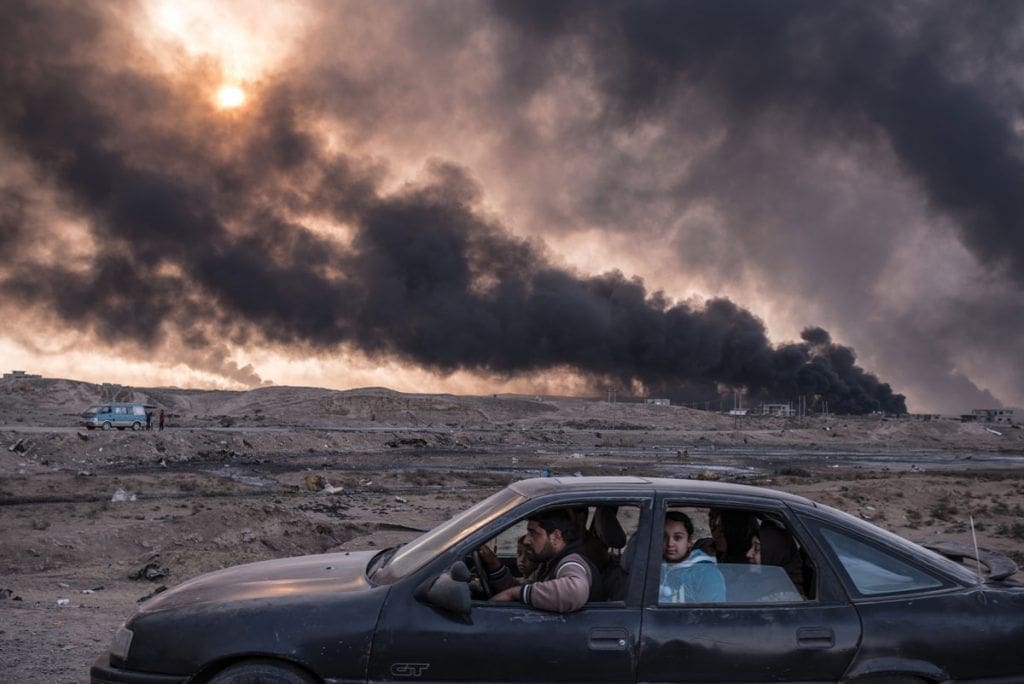Pressing Matters – a photojournalistic encapsulation of the year 2016
Annually, the World Press Photo Foundation recognises photographers’ visual creativity and commitment to in-depth photojournalism by exhibiting pictures that capture an event or issue of great journalistic importance in the previous 12 months.
This year, an intense and haunting depiction of the assassination of Turkey’s Russian ambassador took the prestigious first prize as Photo of the Year. Captured seconds after the assassination, it shows Mevlüt Mert Altıntaş, a 22-year-old off-duty police officer, standing next to the lifeless body, with one finger pointing defiantly in the air while gripping onto his weapon. Altıntaş wounded three other people before being killed by officers in a shootout. Burhan Ozbilici, an Associated Press photographer, made a spontaneous decision on December 19, 2016, to attend the exhibition simply because it was on his way home. Speaking to The New York Times, Ozbilici admitted he was afraid but he did not panic: “I’m a journalist and I had to stand and do my job even if I got hit or killed. At that moment I tried to represent not just AP but all good independent journalists.”
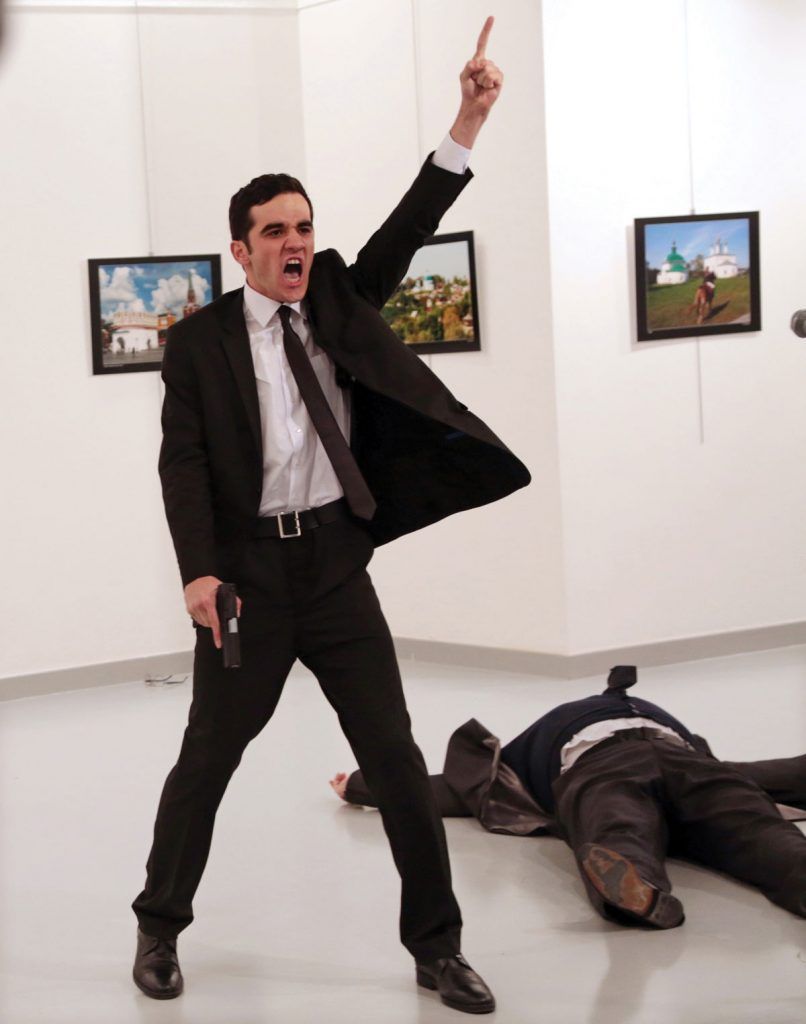
Mary F Calvert, a member of the jury convened in Amsterdam, spoke about the winning photograph: “It was a very, very difficult decision, but in the end we felt the Picture of the Year was an explosive image that really spoke to the hatred of our times. Every time it came on the screen you almost had to move back because it such an explosive image and we really felt that it epitomises the definition of what the World Press Photo of the Year is and means.”

Jury member João Silva added: “Right now I see the world marching towards the edge of an abyss. This is a man who has clearly reached a breaking point and his statement is to assassinate someone who he really blames, a country that he blames, for what is going on elsewhere in the region. I feel that what is happening in Europe, what is happening in America, what is happening in the Far East, Middle East, Syria, and this image to me talks of it. It is the face of hatred.”
Unfortunately, the rest of the exhibition features more equally shocking photographs, each one indicative of the desperation and frustration that’s apparent in our society today. This year saw a flood of stunning, at times terrifying, images out of Iraq and Syria, with a focus on the forefront of the refugee crisis, as they arrive in Europe via boat and foot, with groups blocked at the borders or crammed into trains. Other images captured the Paris attacks in January and November, the devastating poaching of rhinos in South Africa and the conflict in the United States set off by police shootings.
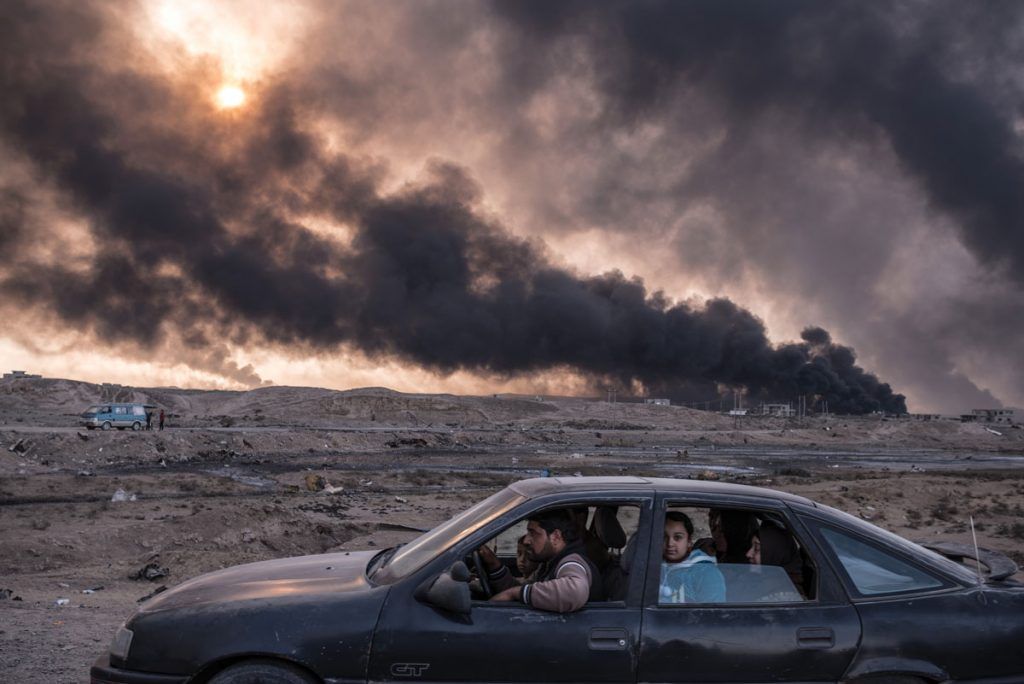
Iraq’s Battle To Reclaim Its Cities – Sergey Ponomarev, for The New York Times
More than two years after Islamic State first blitzed across Iraq in 2014, Iraqi security forces spent the year scrambling to evict the militant group from Mosul, its last major stronghold in the country. The campaign has displaced nearly 70,000 Iraqis, and may uproot hundreds of thousands more. With an escalating number of civilians caught up in the battle, some military officials are second-guessing their initial strategy. Here a family flees the fighting in Mosul, Iraq’s second-largest city, as oil fields burned in Qayyara, Iraq.
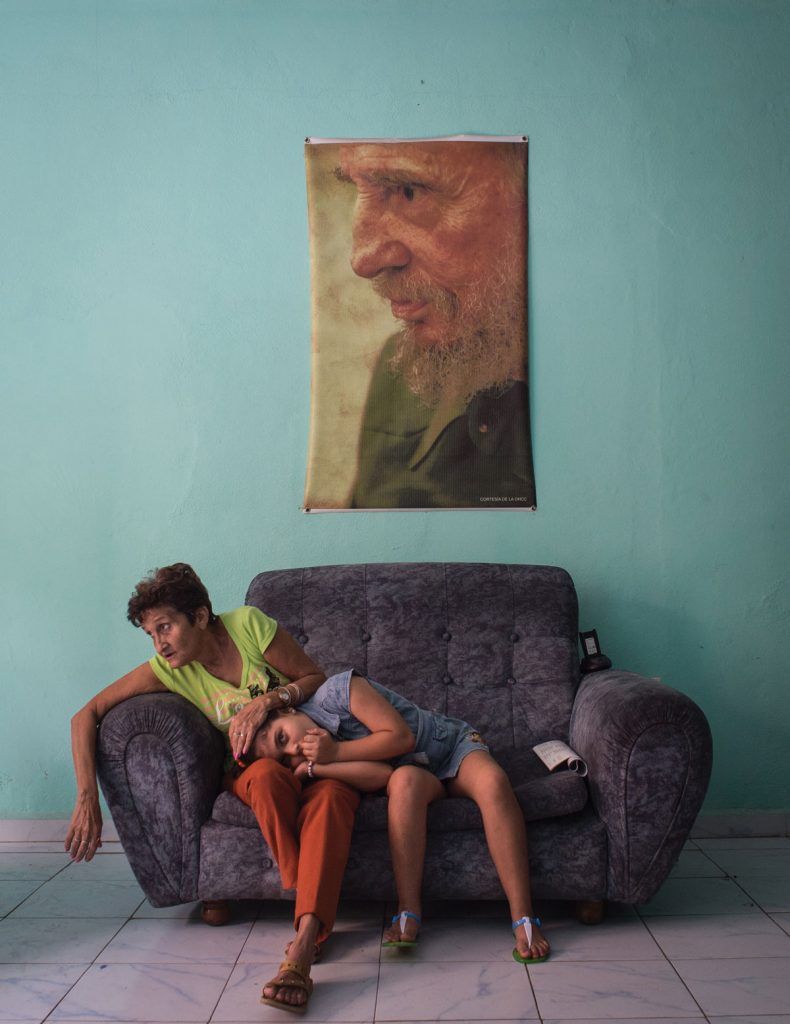
Fidelity – Kristina Kormilitsyna, Kommersant Newspaper
A woman strokes the head of a girl resting on her lap as they sit on a sofa in a police station in Camaguey, Cuba, on February 12, 2016, a portrait of Fidel Castro hanging above them. Fidel Alejandro Castro Ruz was a Cuban revolutionary and politician who governed the Republic of Cuba as prime minister from 1959 to 1976 and then as president from 1976 to 2008.
Victims Of The Zika Virus


We Are Not Taking Any Prisoners – Alessio Romenzi
Fighters of the Libyan forces affiliated to the Tripoli government walk around the gigantic chandelier of the conference room in Ouagadougou Congress Complex.
Sirte, Libya, is one of the three self-proclaimed capitals of the so-called Islamic State, along with Raqqa in Syria and Mosul in Iraq. It was the first of the three to fall, with an offensive launched by the Libyan government in May 2016. It took seven months of fighting, 500 American airstrikes, the lives of 700 Libyan soldiers and more than 3000 injured Libyan soldiers to finally declare the city free.
Black Days Of Ukraine

Mediterranean Migration
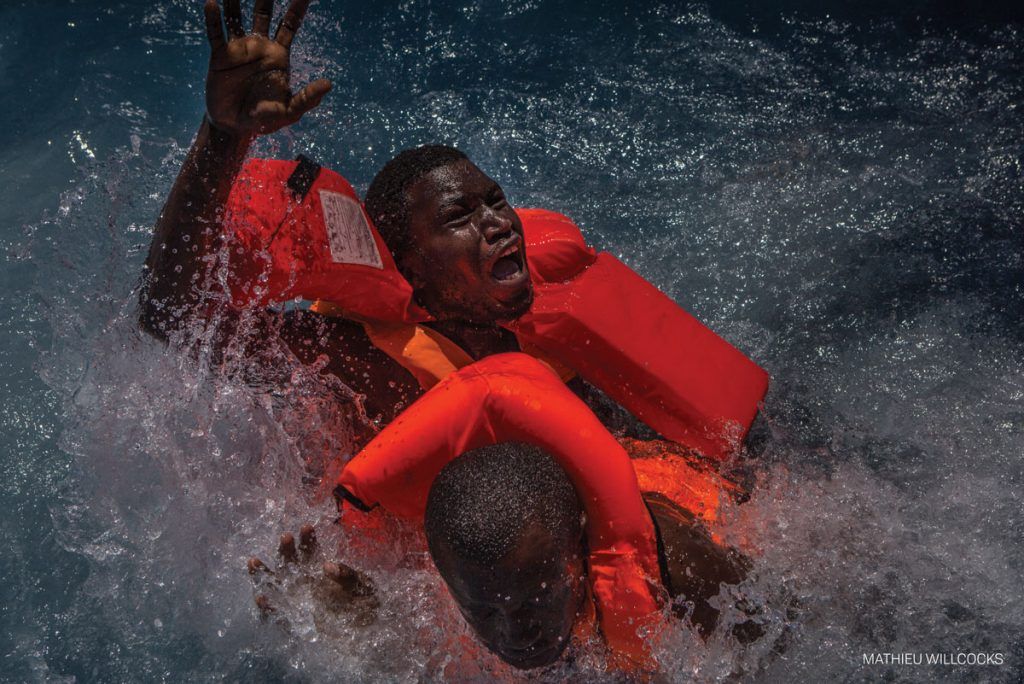
Two men panic and struggle in the water during their rescue. Their rubber boat was in distress and deflating quickly on one side, tipping many refugees in the water. They were quickly reached by rescue swimmers and brought to safety.
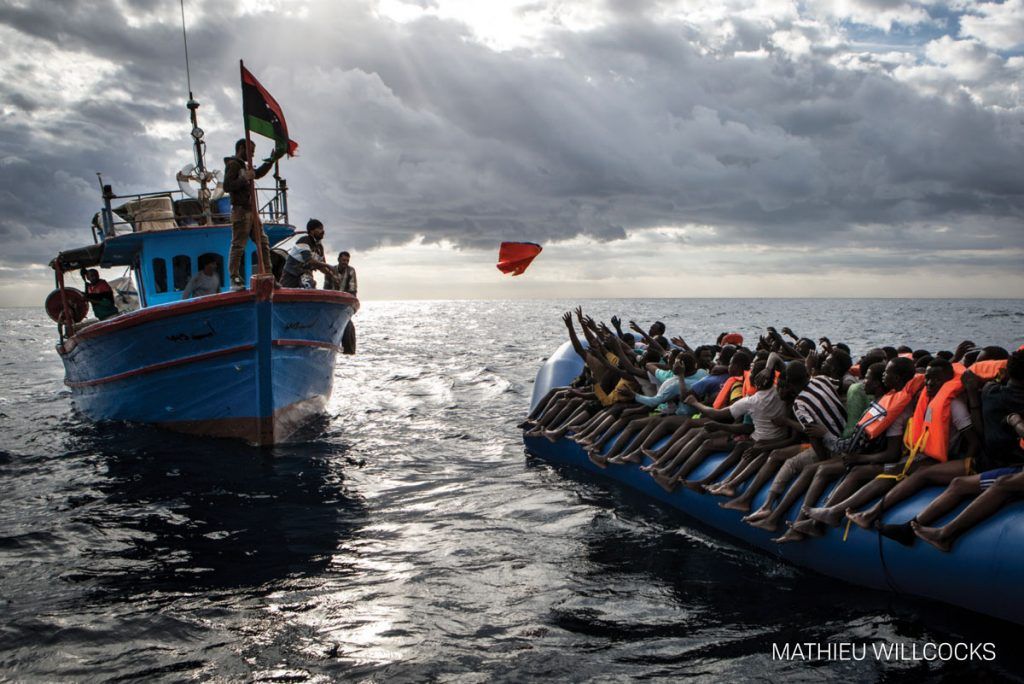
The central Mediterranean migration route, between the coasts of Libya and Italy, remains busy. According to reports by the UNHCR (the UN Refugee Agency), 5000 people died while attempting to cross the Mediterranean in 2016. NGOs and charities such as Migrant Offshore Aid Station (MOAS) continue their efforts to patrol the patch of sea north of the Libyan coast, in the hope of rescuing refugees before the potential of drowning. The rescue team on board the MOAS’ Responder are there to mitigate loss of life at sea. Operating like a seaborne ambulance, they rush to assist and rescue refugee vessels in distress, provide medical assistance, and bring the refugees safely to Italy.

